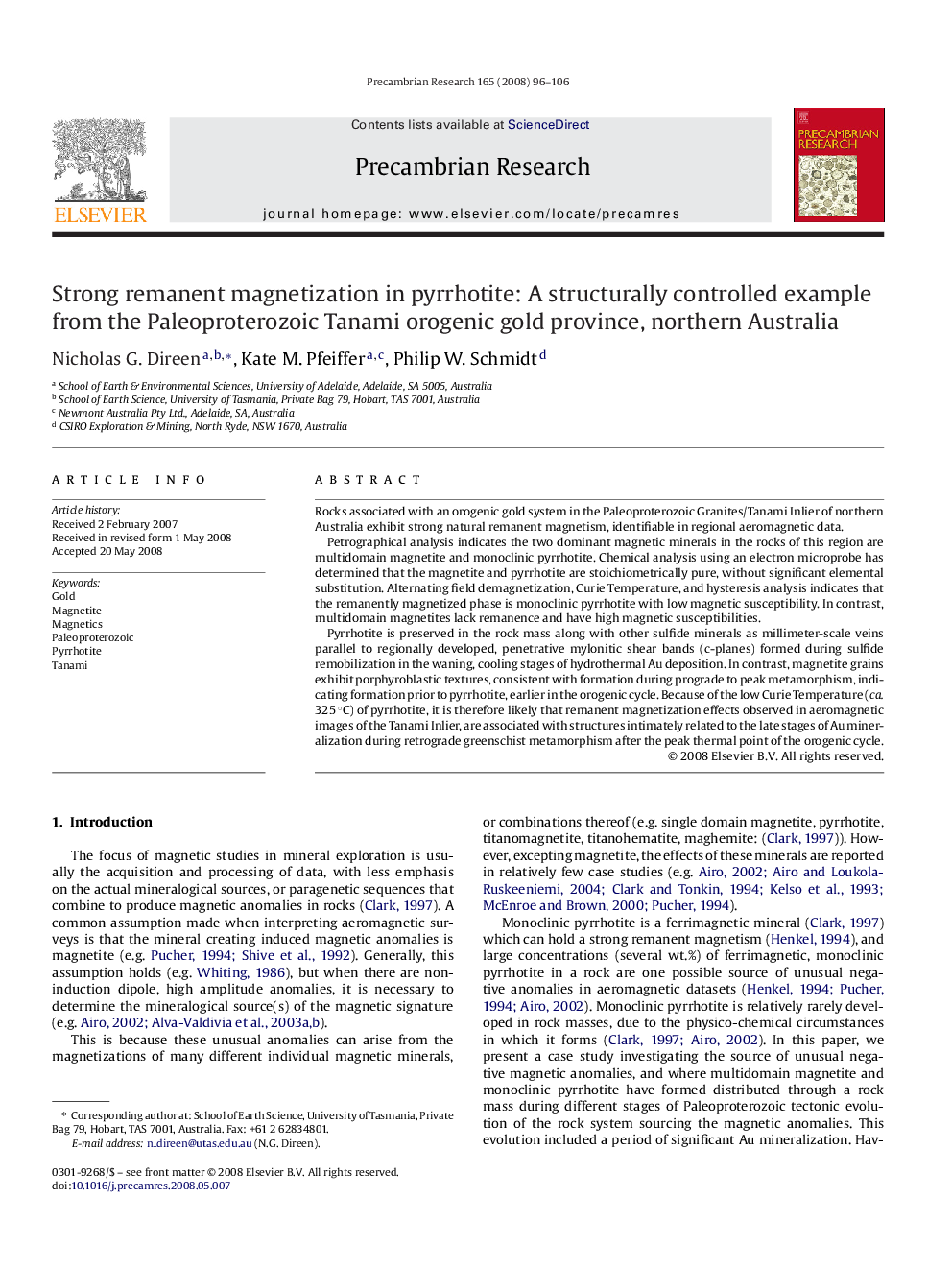| Article ID | Journal | Published Year | Pages | File Type |
|---|---|---|---|---|
| 4724256 | Precambrian Research | 2008 | 11 Pages |
Rocks associated with an orogenic gold system in the Paleoproterozoic Granites/Tanami Inlier of northern Australia exhibit strong natural remanent magnetism, identifiable in regional aeromagnetic data.Petrographical analysis indicates the two dominant magnetic minerals in the rocks of this region are multidomain magnetite and monoclinic pyrrhotite. Chemical analysis using an electron microprobe has determined that the magnetite and pyrrhotite are stoichiometrically pure, without significant elemental substitution. Alternating field demagnetization, Curie Temperature, and hysteresis analysis indicates that the remanently magnetized phase is monoclinic pyrrhotite with low magnetic susceptibility. In contrast, multidomain magnetites lack remanence and have high magnetic susceptibilities.Pyrrhotite is preserved in the rock mass along with other sulfide minerals as millimeter-scale veins parallel to regionally developed, penetrative mylonitic shear bands (c-planes) formed during sulfide remobilization in the waning, cooling stages of hydrothermal Au deposition. In contrast, magnetite grains exhibit porphyroblastic textures, consistent with formation during prograde to peak metamorphism, indicating formation prior to pyrrhotite, earlier in the orogenic cycle. Because of the low Curie Temperature (ca. 325 °C) of pyrrhotite, it is therefore likely that remanent magnetization effects observed in aeromagnetic images of the Tanami Inlier, are associated with structures intimately related to the late stages of Au mineralization during retrograde greenschist metamorphism after the peak thermal point of the orogenic cycle.
